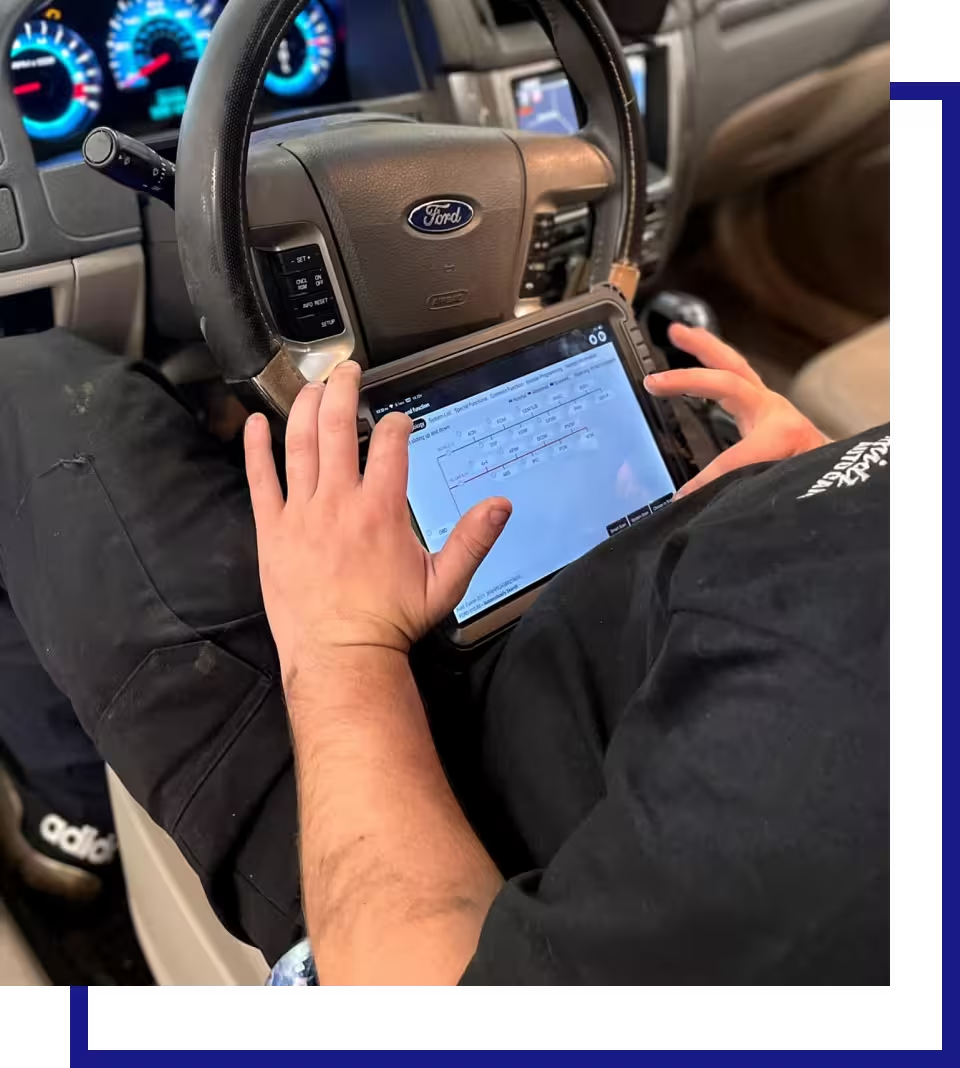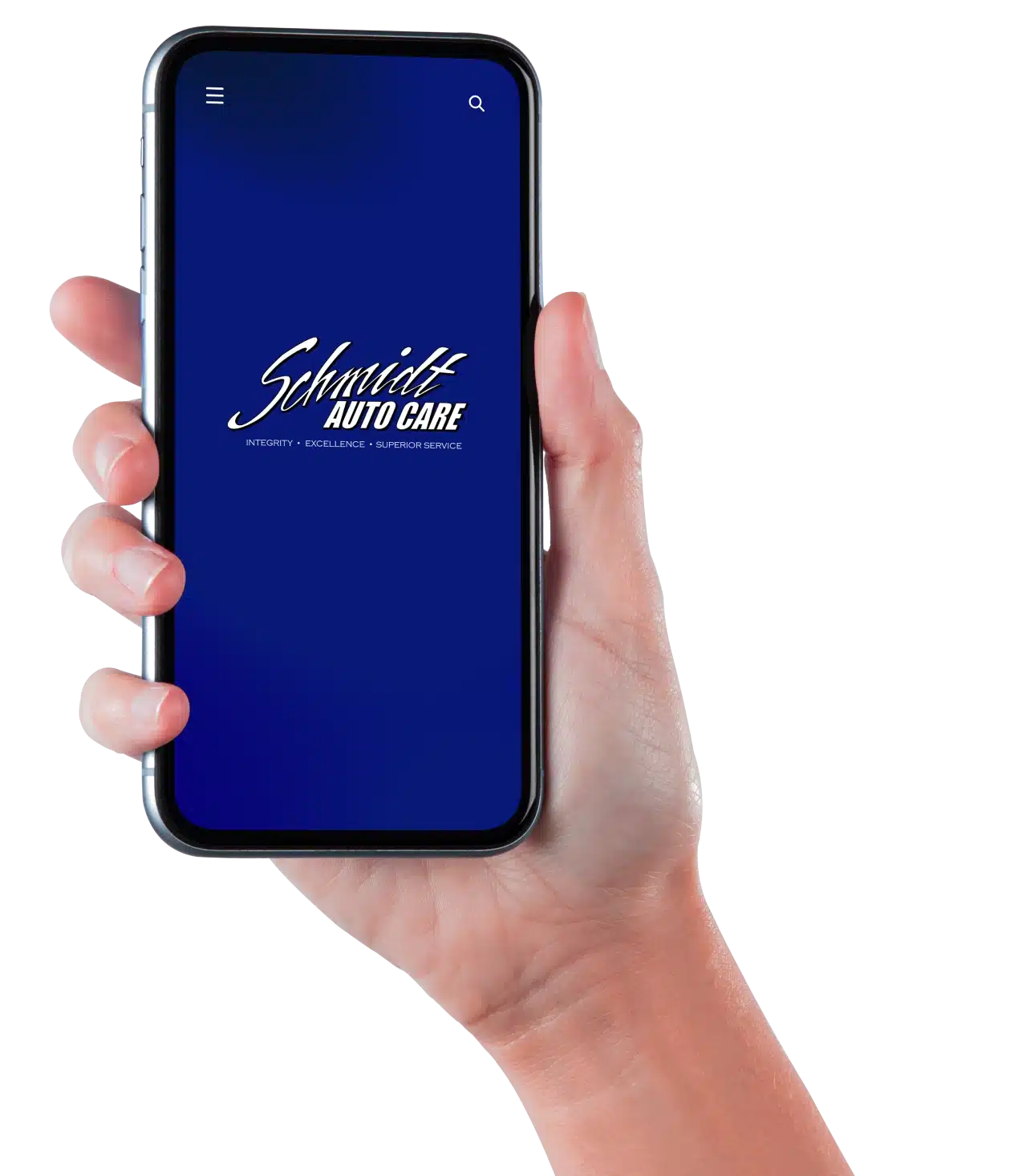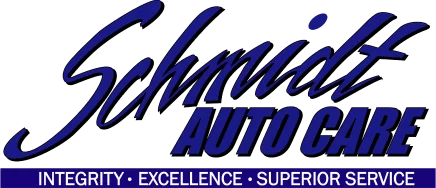ADAS Calibration
ADAS Calibration Services in Springboro, OH
Modern vehicles rely on Advanced Driver Assistance Systems (ADAS) to enhance safety and improve driving confidence. At Schmidt Auto Care, we provide professional ADAS calibration services to ensure these advanced systems function with precision. Whether you’ve replaced a windshield, repaired a sensor, or adjusted your suspension, our ASE-certified technicians are equipped with the tools and expertise to recalibrate your vehicle accurately. Conveniently located in Springboro, OH, we proudly serve drivers with integrity, excellence, and superior service.
We’re a family business taking care of families.

What Is ADAS Calibration and Why Is It Important?
ADAS calibration involves precisely aligning the cameras, sensors, and radar systems that power advanced safety features like lane-keeping assist, adaptive cruise control, automatic emergency braking, and blind spot monitoring. These systems depend on accurate positioning to function correctly, ensuring they detect lane markers, maintain safe distances, avoid collisions, and alert you to vehicles in your blind spots. Proper calibration enhances safety, prevents false alerts, and provides a seamless driving experience.
Signs You Need ADAS Calibration
Certain events can disrupt ADAS components, making calibration essential to restore accuracy and ensure safety features work properly.
Sensor Repairs or Replacements
Radar sensors and cameras require recalibration after repairs or replacements to maintain accurate detection and prevent false alerts or missed obstacles.
Suspension or Alignment Adjustments
Changes to your vehicle’s height or alignment can impact sensor positioning. Calibration ensures systems like adaptive cruise control and collision avoidance function correctly.
Dashboard Warnings
ADAS-related warning lights or error messages often indicate misaligned or malfunctioning components. Recalibration resolves these issues and restores proper operation.
If you’ve experienced any of these scenarios, visit Schmidt Auto Care for professional ADAS calibration services that keep your safety systems working flawlessly.
ADAS Calibration Services at Schmidt Auto Care
Our team is equipped with the latest tools and expertise to recalibrate ADAS systems for a wide range of makes and models.
01
Windshield-Mounted Camera Calibration
Precise alignment of cameras to restore lane-keeping assist and other vision-based systems.
02
Radar Sensor Calibration
Adjustments for adaptive cruise control and collision avoidance systems to ensure accurate detection.
03
Suspension and Alignment Calibration
Verifies proper ADAS functionality after changes to your vehicle’s height or alignment.
04
Full System Testing
Comprehensive checks of all ADAS features to confirm accuracy and reliability.
At Schmidt Auto Care, we use advanced technology to deliver precise calibration, keeping your safety systems functioning at their best.
How Schmidt Auto Care Ensures Accurate ADAS Calibration
At Schmidt Auto Care, we combine advanced technology, skilled technicians, and meticulous processes to deliver precise ADAS calibration services. Our ASE-certified team uses state-of-the-art calibration equipment to fine-tune cameras, sensors, and radar systems according to manufacturer specifications. We perform comprehensive testing to verify the accuracy and reliability of all ADAS features, ensuring they operate seamlessly and safely. With our expertise, you can trust that your vehicle’s safety systems are recalibrated to perfection, keeping you confident and secure on the road.
Why Choose Schmidt Auto Care for ADAS Calibration?
Schmidt Auto Care combines expertise, technology, and customer-focused care to provide exceptional ADAS calibration services.
Expert ADAS Specialists
Our ASE-certified technicians are equipped to manage the complexities of advanced vehicle safety systems.
Proudly Veteran-Owned and Family-Led
Delivering reliable service grounded in community values and a strong commitment to quality.
Inclusive Environment
Creating a respectful and supportive space where trust and clear communication are always prioritized.
Transparent Diagnostics
Stay informed with detailed insights through Digital Vehicle Inspections (DVI), including photos and videos.
Dependable Coverage
Enjoy confidence in our work with a 2-year, unlimited-mile warranty on all qualifying services.
Customer Convenience
Experience seamless service with loaner cars, secure text-to-pay, curbside options, and a user-friendly mobile app.
Committed to Community Engagement
Schmidt Auto Care actively participates in local organizations like the Springboro Chamber of Commerce and supports community initiatives through events, partnerships, and education.
Active Engagement in Industry Events
Regularly attending VISION Hi-Tech Training & Expo, ASTE, and Ratchet & Wrench conferences to stay updated on the latest automotive advancements.
Earn Rewards
Download the Schmidt Auto Care Mobile App and Save!
Simplify your ADAS calibration needs with the Schmidt Auto Care mobile app. Easily schedule services, track reminders, and earn loyalty rewards—all from your phone. New customers enjoy $20 off labor on their first ADAS calibration. Download today to keep your vehicle safe while saving more with every visit.


Schedule Your ADAS Calibration
in Springboro Today!
Don’t leave your safety systems to chance—schedule professional ADAS calibration with Schmidt Auto Care. Conveniently located at 285a Hiawatha Trail, Springboro, OH 45066, we’re here to ensure your advanced safety features are functioning perfectly.
Call us now at 937-514-7860 or download our mobile app to book your appointment and start earning rewards. Trust Schmidt Auto Care for integrity, excellence and superior service!

